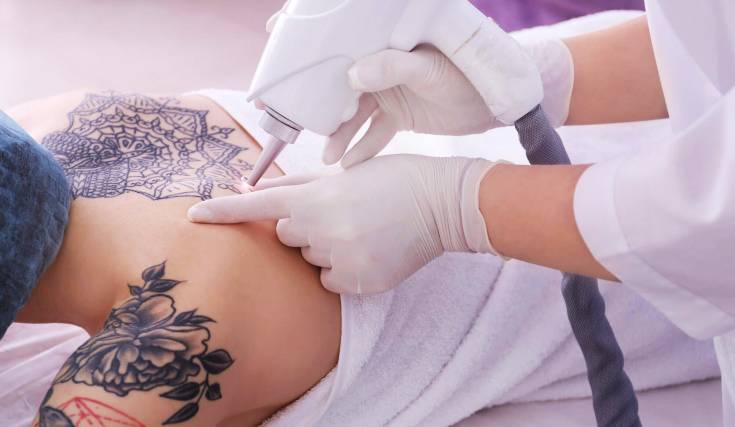-
28 April 2020
What Is The Best Method For Tattoo Removal?

Tattoos are a beautiful depiction of our feelings and views. However, at times, they can become the remembrance of an impulsive decision or horrible mistake made in the past. If you have ink on your body which falls in the second category, then you must be looking impatiently for ways to get rid of it as soon as possible.
There are several ways of removing a tattoo ranging from home remedies to skin excisions. However, nothing has proven as successful and comfortable as laser tattoo removal in Melbourne carried out by expert and licensed technicians.
If you wish to know about all the techniques utilised for the elimination of ink, then here are the best ways listed down for you. Take a look.
As stated above, laser tattoo removal should be your first choice for the treatment as it doesn’t cause any scarring or side-effects. The pain is equivalent to a rubber band snapping on your skin. If your pain bearing threshold is low, then a topical anaesthetic cream can be applied by the practitioner before using the laser.
The human immune system removes all the foreign particles from the body, but the ink particles are too big for excretion. Thus the laser beam penetrates the epidermis and breaks the ink present in the dermis into small particles that can be easily removed by the body.
The laser tattoo removal treatment requires several sessions, which are spaced 6-8 weeks apart to allow the skin to heal. The number of sessions depends upon the size, colour, location and age of the tattoo and can be determined by the dermatologist during the first appointment.
The surgical removal of tattoos is an invasive procedure and has to be carried out by a medical practitioner. However, it is feasible only for small tattoos and doesn’t work in case of tattoos that cover a large surface area.
It involves surgically removing the skin containing the tattoo and then stitching the surrounding skin together. It leaves a visible scar behind on the line of the stitches. Some surgeons use skin excision treatments for large tattoos by using skin graft to cover up the incision.
However, it hasn’t provided desirable results as sometimes the new skin appears mismatched or causes infection. It needs the administration of local or general anaesthesia, and the wound is covered with a bandage after surgery for two days and needs to be saved from infection.
It is another surgical treatment which entails the use of a mechanical tool to remove the upper layers of skin containing the ink. Since it includes grinding of the skin, it is quite painful and involves the use of an anaesthetic.
It is not as successful as skin excision or laser tattoo removal which works beneath the skin. The wound takes almost two weeks to heal, and side-effects include bleeding from the treated skin as it eliminates the top layer.
If you do not want to spend money, then you can resort to tattoo removal creams which are cheaper than all other methods. However, they work on the epidermis and do not reach the deeper layer of skin.
Thus they are useful only in fading the tattoo and do not remove it permanently. However, make sure that you are using legitimate products as these can cause rashes and skin irritation.
Similar to creams, chemical peels are a cost-effective way of fading the tattoo. They contain trichloroacetic acid (TCA), which removes the upper layer of the skin and fades the ink. It is a painful procedure and needs anaesthesia.
Thus you must not apply them on your own as it can lead to burning of the skin. It leaves behind a wound which needs to be tended carefully with regular cleaning and dressing to allow it to heal within a week. Although these are successful in removing wrinkles and blemishes, they only manage to fade the tattoo ink.
Rubbing a mixture of lemon juice and salt for half an hour can help in fading the tattoo. Other do-it-yourself methods include applying a paste of aloe vera, yoghurt, salt and honey on the tattoo for half an hour.
Some people make use of the traditional salabrasion method, which has become obsolete now. It entails sanding the skin with salt for half an hour or more until it becomes darker. Then you must cover the treated skin after applying an antibiotic ointment.
After 7-8 days, the top layer of the skin will peel off and will make the tattoo ink lighter. The process can be repeated after 1.5 to 2 months when the skin has completely healed.
The treatments mentioned above can help in the removal of tattoos. However, laser tattoo removal in Melbourne remains the most effective and permanent way of eliminating the ink with minimal side-effects.